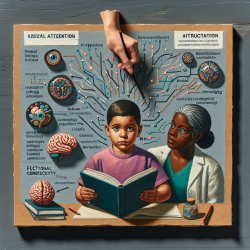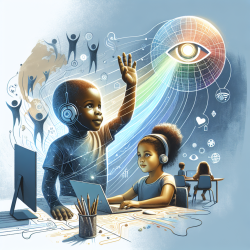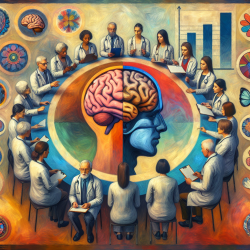Introduction
As practitioners dedicated to improving the reading skills of children, understanding the multifaceted nature of dyslexia is crucial. Recent research, such as the study by Taran et al. (2022), has shed light on the significant role of visual attention in dyslexia, offering valuable insights for enhancing therapeutic approaches. This blog aims to distill the key findings of this research and suggest practical applications for practitioners working with children with dyslexia.
Understanding Dyslexia Beyond Phonological Deficits
Traditionally, dyslexia has been attributed primarily to phonological processing deficits. However, the study by Taran et al. (2022) highlights the importance of visual attention in reading comprehension, suggesting that dyslexia involves a broader spectrum of cognitive challenges. This paradigm shift underscores the need for a more comprehensive approach to dyslexia intervention.
Key Findings from the Study
- Functional Connectivity Differences: The study revealed that typical readers exhibit greater functional connectivity between the dorsal attention network and the left angular gyrus during reading tasks compared to children with dyslexia.
- Role of Executive Functions: Both executive functions and visual attention were found to significantly contribute to reading comprehension, indicating that these cognitive processes are integral to effective reading.
- Visual Attention and Reading Tasks: In typical readers, increased connectivity between the ventral attention network and the fronto-parietal network was observed during dynamic reading tasks, a pattern not seen in children with dyslexia.
Implications for Practitioners
These findings suggest that interventions should not only focus on phonological skills but also incorporate strategies to enhance visual attention and executive functions. Here are some practical steps practitioners can take:
- Incorporate Visual Attention Exercises: Implement activities that strengthen visual tracking and attention, such as games that require following moving objects or identifying differences in visual patterns.
- Enhance Executive Function Skills: Use tasks that promote planning, organization, and flexible thinking. Activities like puzzles, memory games, and tasks that require sequencing can be beneficial.
- Multisensory Learning Approaches: Integrate visual, auditory, and kinesthetic learning modalities to engage multiple cognitive pathways, thereby supporting the development of reading skills.
Encouraging Further Research
While the study provides valuable insights, further research is needed to explore the interplay between visual attention and other cognitive processes in dyslexia. Practitioners are encouraged to stay informed about emerging research and consider participating in studies that contribute to the evolving understanding of dyslexia.
Conclusion
The study by Taran et al. (2022) emphasizes the critical role of visual attention in dyslexia, offering a broader perspective on intervention strategies. By integrating these findings into practice, practitioners can enhance their therapeutic approaches and contribute to better outcomes for children with dyslexia.
To read the original research paper, please follow this link: The role of visual attention in dyslexia: Behavioral and neurobiological evidence.










